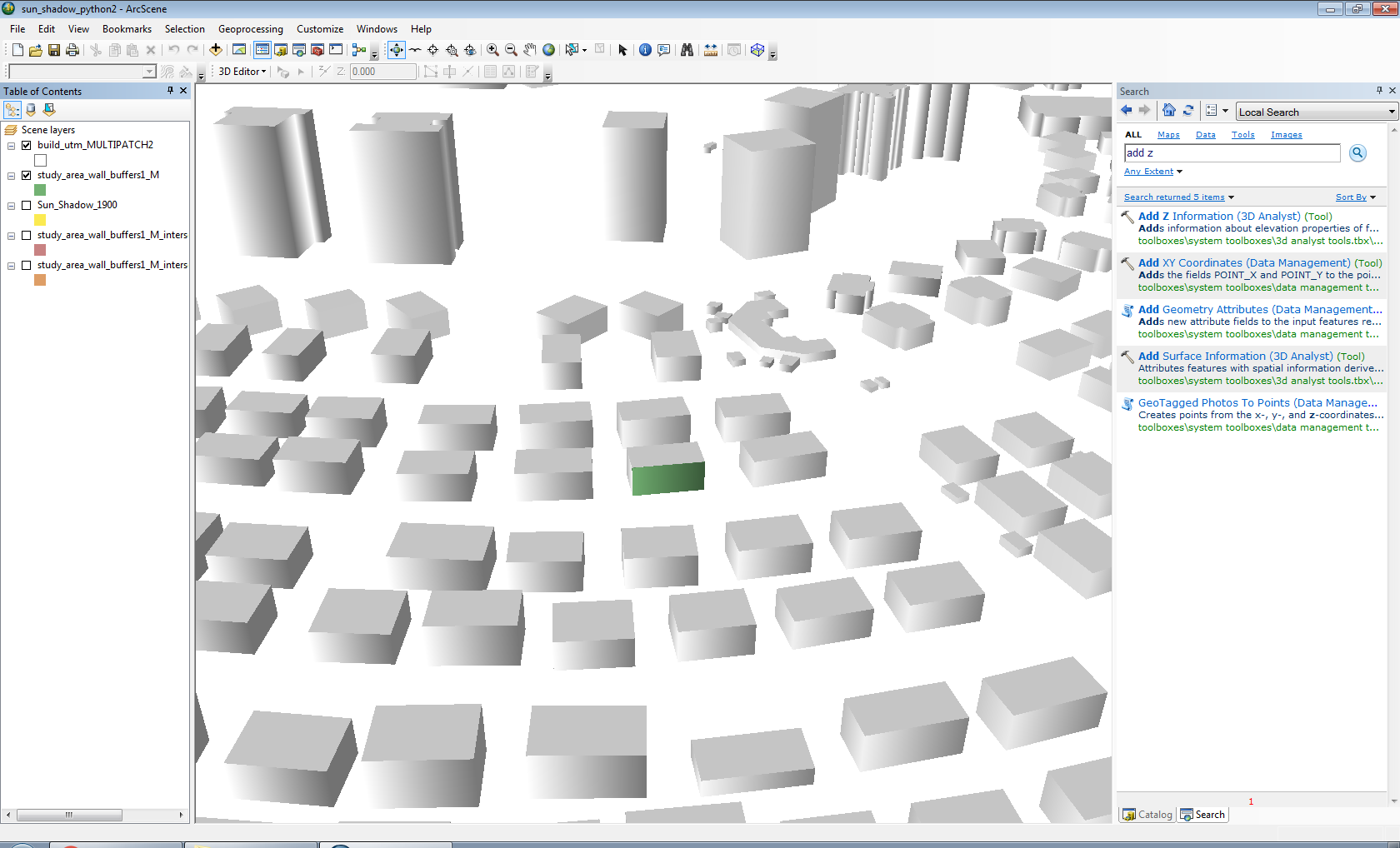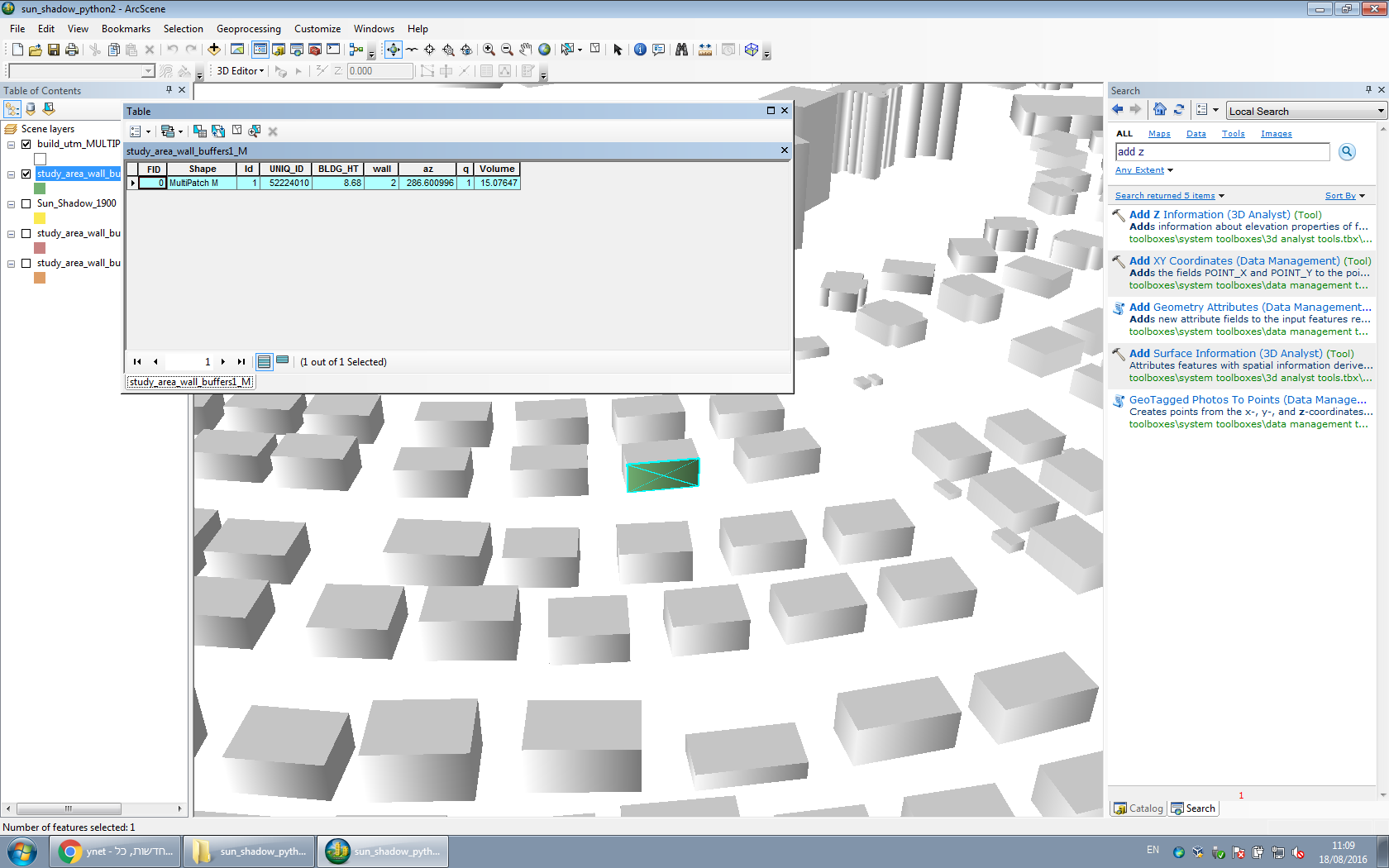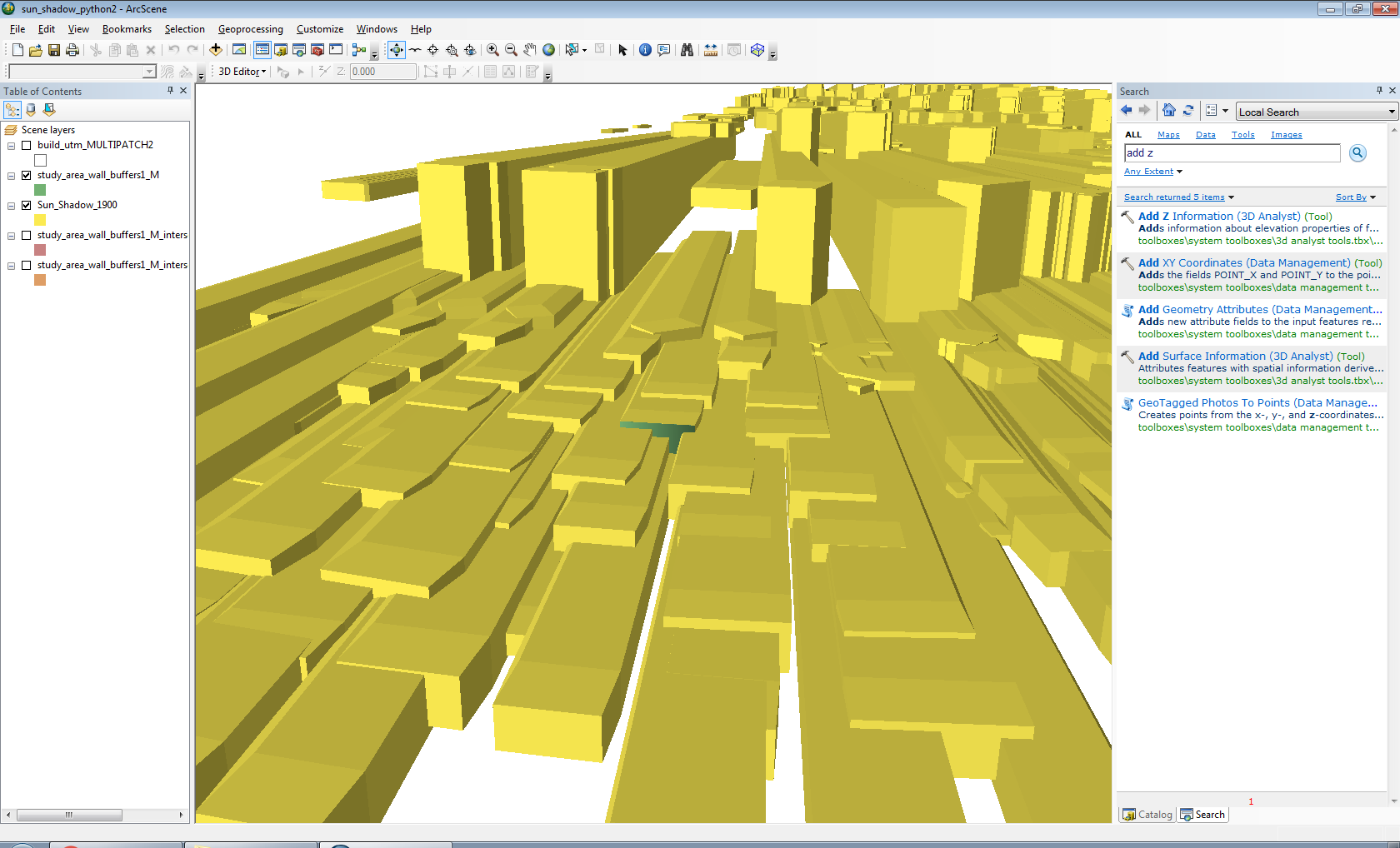- Home
- :
- All Communities
- :
- Products
- :
- 3D
- :
- 3D Questions
- :
- Re: Problem with calculating wall shaded fraction
- Subscribe to RSS Feed
- Mark Topic as New
- Mark Topic as Read
- Float this Topic for Current User
- Bookmark
- Subscribe
- Mute
- Printer Friendly Page
Problem with calculating wall shaded fraction
- Mark as New
- Bookmark
- Subscribe
- Mute
- Subscribe to RSS Feed
- Permalink
Hi All,
I attempted to calculate the the shaded fraction of a single wall, at a given point in time, taking into account shade from surrounding buildings. However the calculation didn't work as expected and I'm really confused... Any help will be greatly appreciated!
As can be seen in the following image, the initial input layers are -
1. A Multi-patch layer representing buildings in a given neighborhood (shown in grey).
2. A Multi-patch layer representing a single wall of one of the buildings (shown in green).

The wall is, in fact, a segment 10 cm wide, shifted 1 cm from the actual buildings, so that there is no intersection between them, as can be seen in the following "view from above" -

The intention was to find out (1) the volume of the wall, and (2) the volume of the intersection between the wall and a sun shadow multi-patch. Using these two figures the shaded fraction can then be calculated.
Wall volume (1), is equal to 15 m^3 as given using the "Add Z Information" tool -

In order to obtain the shaded fraction volume, I first calculate a "Sun Shadow" multi-patch using the "Sun Shadow Volume" tool, for an arbitrary time point (today at 19:00) (shown in yellow) -

Using the "Intersect 3D" tool the shaded part of the wall is obtained (shown in red below). Visually its shape perfectly makes sense. However, examining its volume reveals that it is composed of five features, giving a total of -
5.82+5.27+2.06+1.14+0.12 = 14.41 m^3
In other words, according to the calculation 95.6% of the wall is shaded, which is clearly an overestimate.

My initial thought was that the five multi-patch features are partially overlapping which leads to the overestimation. Therefore I tried dissolving them with the "Union 3D" tool. Visually the result looks the same, and indeed it was reduced to two features. However the volume is now 0 m^3 !

Does anyone have an idea what is going on?
The attached file includes three input layers - buildings, wall and sun shadow - in case anyone is interested to reproduce the issue.
Thanks in advance!
Michael
P.S. The following video by ESRI advertises exactly the same application I tried to achieve so I hope it is indeed possible -
Volumetric Shadow Analysis Over Time | ArcGIS Video (see last ~10 seconds)
- Mark as New
- Bookmark
- Subscribe
- Mute
- Subscribe to RSS Feed
- Permalink
The Sun layer has overlap, causing the resulting multipatch to have overlap too. That is why the volume (not area) is so high.
- Mark as New
- Bookmark
- Subscribe
- Mute
- Subscribe to RSS Feed
- Permalink
Hi Xander,
Thank you very much for your reply. I understand that can be the cause for the problem. But I need to know the shaded area taking all buildings into account, not just one, so the shade overlap issue needs to be bypassed somehow.
Best regards,
Michael
- Mark as New
- Bookmark
- Subscribe
- Mute
- Subscribe to RSS Feed
- Permalink
If you do a Union3D on the resulting shaded walls, it will create a result without overlap (2 features):

I am not so convinced about the resulting area. The point is, that you are working with volumes while you goal is to obtain the surface (m²). The surface of the 3D volume is not the same as the shaded part of the wall.
- Mark as New
- Bookmark
- Subscribe
- Mute
- Subscribe to RSS Feed
- Permalink
Thank you very much Xander for looking into it.
Then perhaps there is another approach to quantitatively estimate the shaded proportion of a wall?
Best regards,
Michael